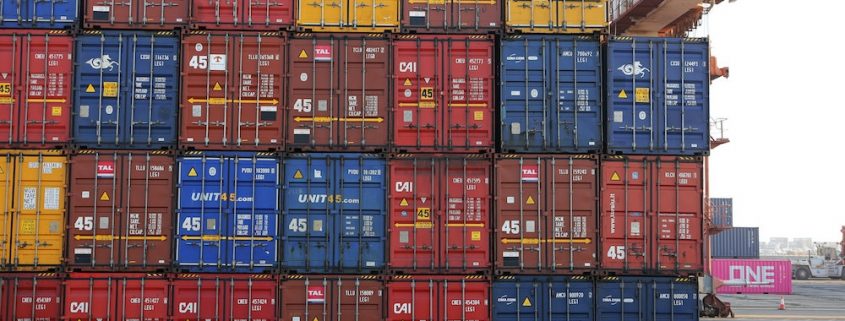How Railcars are Designed to Haul Shipping Containers
Rail freight transport is a huge industry. Railways help businesses haul cargo of all types, from cars to raw materials and steel frames. There are several types of rail car, each designed for a particular purpose. Some of these specifically haul containers. Let’s take a look at some of the main railcars for containers.
Overview of Rail Transport
For context, here’s a quick summary of rail freight transport. Any use of railroads for commercial cargo purposes (not transportation) is rail freight transport. Locomotives haul a series of linked freight cars along railway infrastructure as part of the supply chain. They may move goods partially or fully between shippers and destinations. There are numerous freight car types for different goods and materials. Some of these are specifically focused on containers, like Moon’s storage containers. Containerization has become an integral part of rail freight transport, just like with all other aspects of the global supply chain today. Below, we will review two of the most common car types used for containers.
Conventional Intermodal Railcars
One of the common railcar types used for shipping containers is the conventional intermodal railcar. These are articulated (meaning they share wheels between cars) flat railcars that are great for trailers and containers. They haul shipping containers that can’t stack, usually due to route height restrictions. The articulated feature helps these railcars reduce slack between cars. Slack action is basically how much movement one car has before its motion affects an adjoined car. By reducing slack, the ride quality is better and makes for a less bumpy trip for fragile cargo. Sizing on these railcars can vary, from around 50 feet to over 80 feet in length.
Double Stack Intermodal Railcars: Maximum Efficiency for Containers
Double stack intermodal railcars are similar to conventional intermodal railcars in a few ways. They are also articulated to help improve ride quality for fragile cargo, and are flat. However, these railcars have the ability to haul stacked shipping containers. They can carry a second shipping container on top of the first. This maximizes efficiency and allows for a greater amount of cargo transportation. They also utilize wells often times. Wells reduce the height of stacked containers and lower the center of gravity. This both avoids problems with height restrictions along routes and creates more stability. Wells also improve security for containers. The walls created by the well surround the bottom container and make it impossible to open the container door while it is on the railcar.
There is a high degree of size customization on these railcars, due to their specialization for shipping container transportation. As such, sizes vary from 40 feet to 50 feet and more for containers of all sizes, from 20 foot to 40 and 50 foot containers and larger.
Moon Trailer Leasing offers mobile offices to companies and organizations across Kentucky, Indiana, Ohio and Tennessee. We have offices of all sizes for rent and sale. Call 502-776-2199 for a fast and free quote.





 Buying A Used Shipping Container FAQs
Buying A Used Shipping Container FAQs